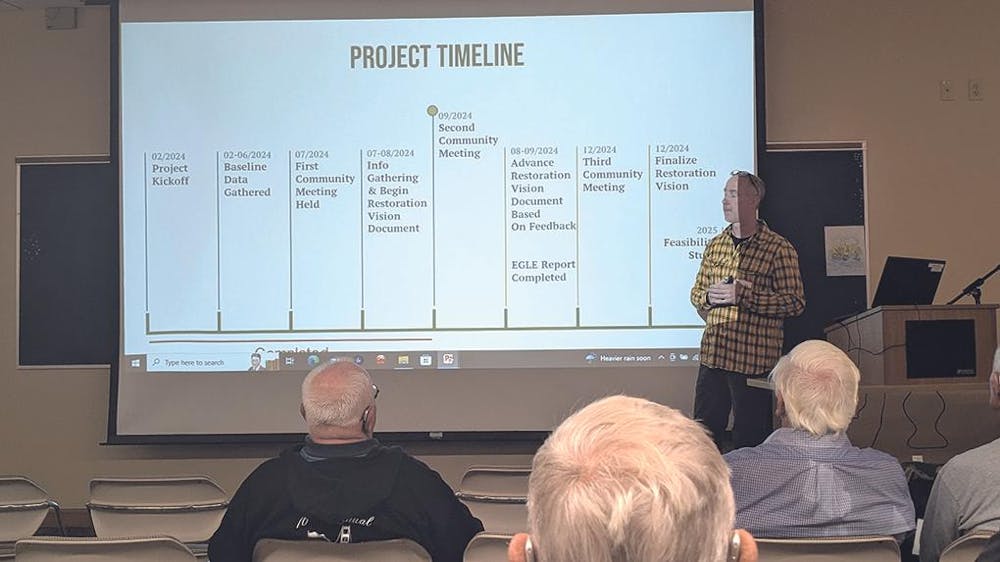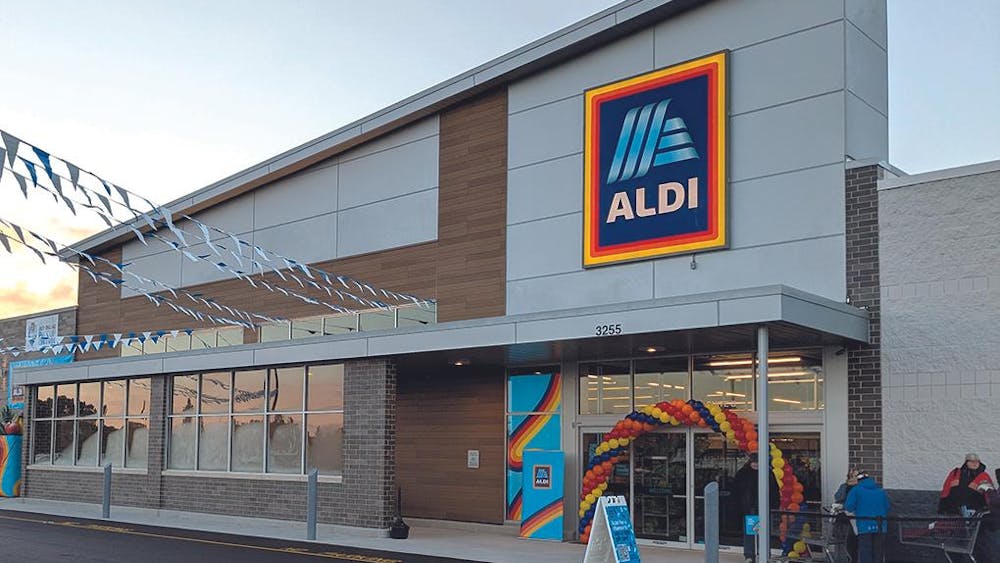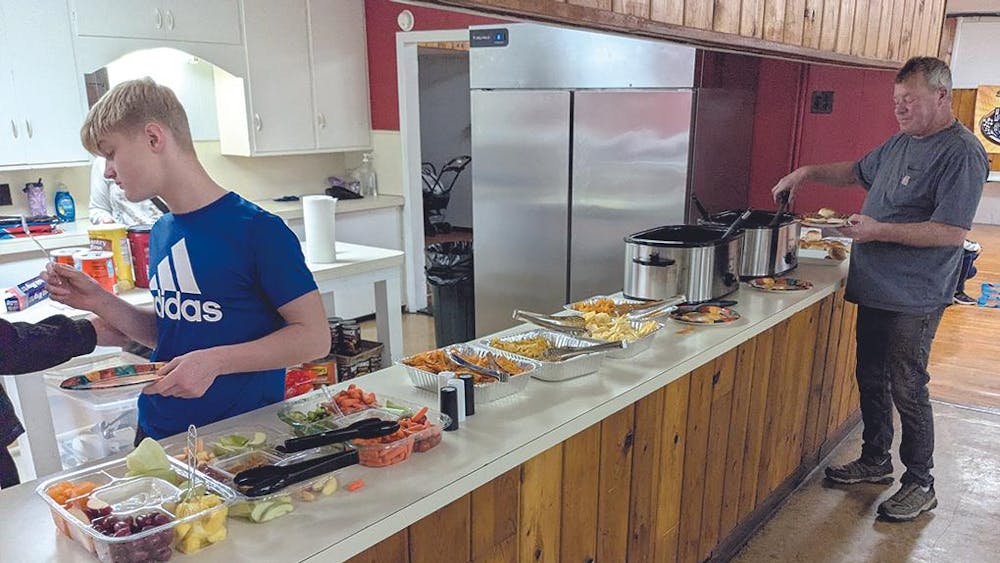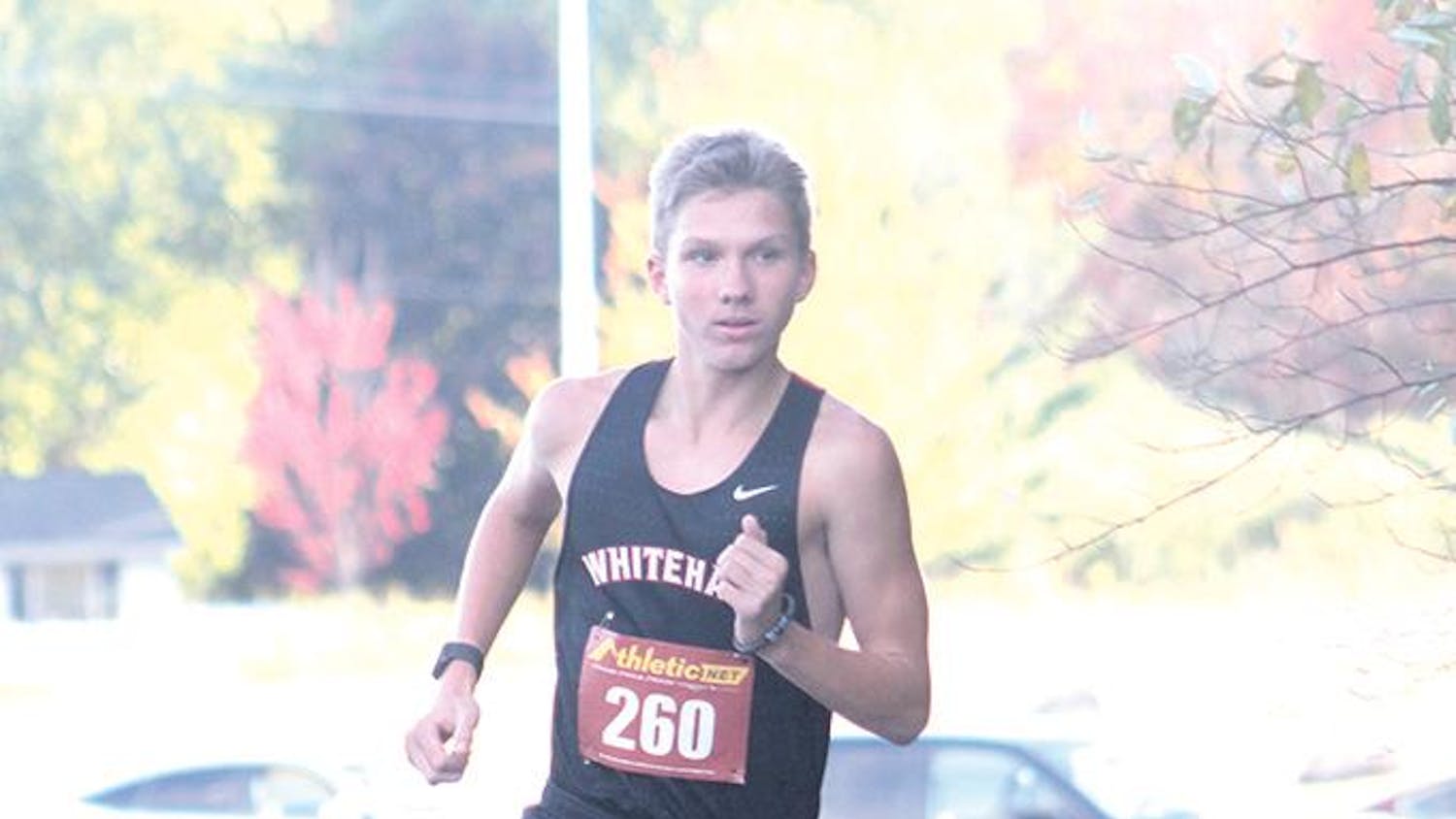WHITEHALL — A second 'visioning session' took place Tuesday night
at the White Lake Community Library as stakeholders and area residents
gathered to continue sharing their hopes for the future of Sadony Bayou.
The
session was the second of three planned meetings to devise a
restoration plan for the bayou, which has never fully recovered from
environmental damage it took from, among other things, the old
DuPont/Chemours facility. A third session is planned for Dec. 4,
intended to finalize a restoration plan. The meetings are being funded
by the Lois M. Ekstrand Fund under guidance from the Community
Foundation of Muskegon County.
As CEIC's Marty Holtgren
said during his portion of the presentation, though, the plan will also
have to include sources of funding, so the work won't be done then.
Holtgren
presented findings the organization received from Grand Valley State
professor Mark Luttenton, who collected water samples from the bayou in
May and again in July, focusing on nitrate and phosphorus levels. The
samplings found phosphorus was cycling through the bayou at acceptable
ecological levels, but that nitrates were being retained at very high
levels - levels that increased from 60% to 94% retention from May to
July.
Water temperature sampling was also done from the
Pierson drain as well as the bayou, showing the Pierson water was at
temperature levels conducive to aquatic life but that Sadony Bayou
waters were far above that. Dissolved oxygen in Sadony Bayou increased
from 4-11 milligrams per liter; five is the figure, Holtgren said, at
which aquatic life is stressed.
Spencer High, a nonprofit
design consultant from Querkus Creative, also presented as he did at the
first meeting. High shared results collected from survey questions
presented to the first meeting's attendees regarding what they hoped to
see from the bayou.
High's results showed the most popular
answer to "What would you like to see from a functioning Sadony Bayou?"
was some version of "a balanced ecosystem." Many wanted to see a
restoration of the bayou that followed historical processes from prior
to European settlement, in hopes that in the future, such measures would
not be needed to revisit the issue.
When asked what they
didn't like about the bayou, respondents said the ecological condition
of it turned them off, particularly the dense algae that covers much of
the water's surface. Concerns about a potential restoration process
included overuse of the bayou, a restoration being too "human-centric"
rather than being focused on ecology, and the currently acceptable water
quality of the Pierson drain being affected.
The evening
concluded with a Q&A session, which included discussion of how the
bayou's water levels may fluctuate naturally if a restoration is
successful, potential property easements to facilitate hiking
opportunities in the bayou, and how much work with local municipalities
would be necessary to enact a restoration.














